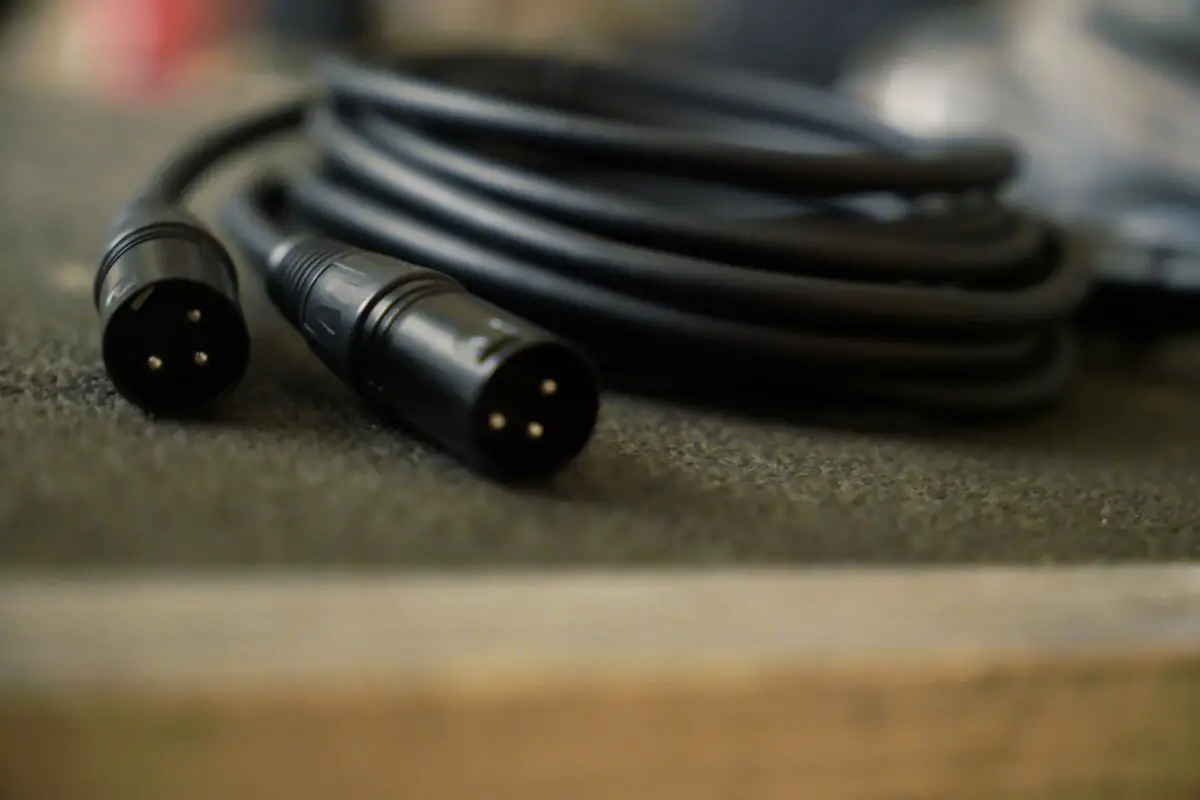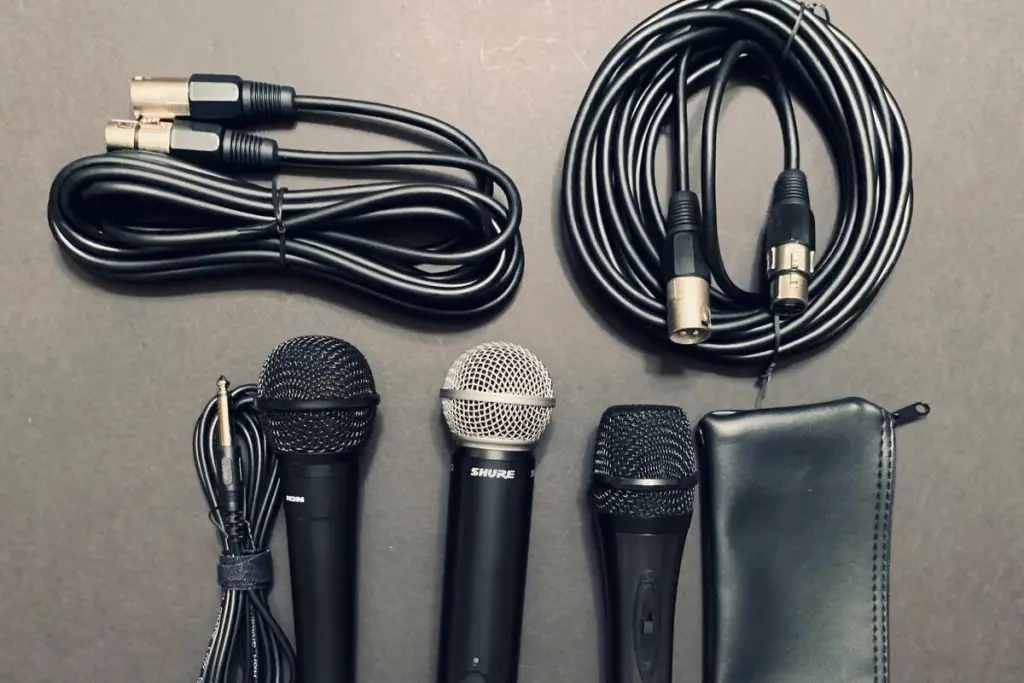Have you ever attended a live concert and found yourself awestruck by the crystal-clear, seemingly effortless audio that surrounds you, creating an immersive experience? Or maybe you’ve watched a broadcast and wondered about the impeccable audio quality? Behind this is the XLR connector, a type of connector used by sound engineers, musicians, broadcasters, and AV professionals globally. So, what exactly is an XLR connector? Let’s find out.
What is an XLR connector? XLR is a type of connector commonly used in professional audio and video electronics like microphones, speakers, amplifiers, and mixers. It usually has three pins (though variants exist with more pins) and is designed to carry balanced signals, reducing the amount of noise introduced into the signal path.
What is an XLR connector?
An XLR connector is a type of electrical connector primarily found in professional audio, video, and stage lighting equipment. The connectors are part of a standard created by ITT Cannon (originally as Cannon X series, later as Switchcraft X series, and finally as XLR), and they’re designed to transmit balanced audio signals.

The term “XLR” itself was derived from the connector’s original design: X stands for X series, L for the type of latch used, and R for the rubber compound used in earlier versions of the connector.
AKAI Professional MPK Mini MK3

AKAI Professional MPK Mini MK3
How do XLR connectors work?
As mentioned, XLR cables transmit balanced audio signals. “Balanced” here refers to the method of minimizing unwanted noise from the signal. It consists of three wires: the ground (or shield), the positive (also known as hot or in-phase), and the negative (cold or out-of-phase). Noise interference picked up along the cable path will typically affect both the positive and negative signals. When these signals are recombined at the receiving end, the noise is canceled out, providing a cleaner sound.
Why are XLR connectors preferred in professional audio and visual settings?
XLR connectors are designed to pass large electrical currents without adding unwanted noise, which is a crucial factor in a professional setting. In professional audio and visual settings, XLR connectors are your lifeline to high-quality, noise-free output.
They have a locking mechanism that prevents accidental disconnection, making them well-suited for live performance and broadcasting situations.
They have a locking mechanism that prevents accidental disconnection, making them well-suited for live performance and broadcasting situations. The standard plug is the 3-pin XLR, but variants can have anywhere from 3 to 7 pins, depending on their application.
The beauty of XLR connectors lies in their standardization across most types of audio devices. Much like USB has become the go-to for connecting a variety of devices, XLR serves the same function in the professional audio world. A standardized connector means less stress about compatibility and more focus on the creative process.
How do you properly use XLR connectors?
An XLR connector is like any other piece of equipment – treat it well, and it will return the favor. Maintenance and careful handling can extend the life of your XLR connectors significantly. Here are a few things you gotta keep in mind to make sure everything runs smoothly.

- Compatibility: First up, you gotta ensure that the gear you’re connecting is compatible. Usually, mics, audio interfaces, speakers, and mixers, all rock with XLRs. Just gotta make sure you’re not trying to plug a round peg in a square hole, ya feel me?
- Check your pins: XLR connectors typically have three pins – one for positive, one for negative, and one for ground. The deal is, you gotta make sure they’re all matching up when you plug ’em in. Like, Pin 1 to Pin 1, Pin 2 to Pin 2, and Pin 3 to Pin 3.
- Secure it: XLR connectors have this dope little feature – a locking mechanism. Once you plug in, make sure to engage that lock to keep the connection secure. You don’t want your epic track to get interrupted because the connector got knocked loose, right?
- Mind the length: XLR cables can carry signals for quite a distance without losing quality but don’t push it too far, man. Keep it under 300 feet, if possible. If you gotta go longer, consider using a signal booster or active cable.
- Keep it clean: Noise can creep in if your cables run near power lines, transformers, or other electronic gear. So, try to keep ’em separated, or use shielded cables if you can’t.
Check out this little table of dos and don’ts:
| Dos | Don’ts |
|---|---|
| Do check the pins before connecting | Don’t force a connection if it doesn’t fit |
| Do keep your cables organized | Don’t yank the cable out of the connector |
| Do use the right cable for the job | Don’t ignore signs of wear and tear |
What are other alternatives to XLR connectors?
While XLR connectors are all the rage in the professional audio and visual world, it’s worth noting there are some other players on the field too. Let’s shed some light on a few alternatives that might come in handy in certain situations.
- Quarter-inch jack: First up is the quarter-inch jack, a connector that’s been around the block. It’s simple, robust, and gets the job done. It’s particularly popular with electric guitars and amplifiers. Even though the quarter-inch jack may lack the balanced audio features of the XLR, it’s still a reliable choice for some applications.
- RCA Connectors: Remember the old red, white, and yellow connectors from your vintage gaming consoles? That’s RCA for you. While they’re not really used in professional settings, RCA connectors are still pretty prevalent in home audio and visual equipment. They may not be Infinity Stones of audio connectivity, but they sure do bring back memories.
- USB and Firewire: These connectors, especially USB, are increasingly popular due to the rise of digital audio interfaces. The convenience factor is high with these guys, but remember, they’re not always the best option for long cable runs or environments with a lot of potential for electrical interference.
If you want even more great tips and information, check out the video below.
Advantages and disadvantages of XLR connectors
As with any topic, it’s important to examine the pros and cons to get a well-rounded view. Let’s delve into the advantages and disadvantages of using XLR connectors in your audio setup.
Advantages of XLR connectors
XLR connectors have some serious advantages up their sleeves. Here’s a quick rundown:
- Balanced audio: XLR connectors support balanced audio, which is a big plus for reducing noise and interference.
- Durability: The solid build and locking mechanism make XLR connectors pretty robust.
- Versatility: You can use XLR connectors with a range of professional audio and visual equipment.
Disadvantages of XLR connectors
Nothing’s perfect, and XLR connectors are no exception. Here are a couple of their downsides:
- Price: XLR connectors and cables can be a bit more expensive than their unbalanced counterparts.
- Size: XLR connectors are larger than some other types of connectors, which can be a disadvantage in some setups.
- Compatibility: Not all gear uses XLR connectors. Some consumer-level and smaller devices might not have XLR inputs, so you’ll need adapters or different cables.
Frequently Asked Questions (FAQ)
As we wrap up our chat on XLR connectors, I’ve compiled a list of questions that might pop up. This section aims to answer some of the questions that are often left floating in the air.
Can I use XLR connectors with my home stereo system?
While you technically could use XLR connectors with a home stereo system, they are usually overkill for most home setups. These connectors are more often used in professional settings where higher levels of interference can affect sound quality.
Do all microphones use XLR connectors?
Not all microphones use XLR connectors, though many professional-grade mics do. Some mics, especially those used for computer-based recording or podcasting, use USB connections. Always check the specs of your mic to know which connector type it needs!
Is there a difference in sound quality between XLR and other connectors?
The sound quality is not inherently better with XLR connectors, but they can offer improved noise reduction due to their balanced signal. This can result in a cleaner sound, especially in environments with a lot of electrical interference.
Conclusion
And there you have it! An electrifying discussion about XLR connectors. I hope you didn’t get too wired up from all the info! Did I cover everything you wanted to know about XLR connectors and their uses in the audio world? I read and reply to every comment, so feel free to drop any additional questions you may have in the comments section. And remember, if this blog post struck a chord with you, don’t keep it to yourself. Sharing is caring, so pass it along to a buddy who might find it useful. Until next time, keep those beats banging and those connectors connecting!
Key Takeaways
This article covered the ins and outs of XLR connectors. Here are some key takeaways:
- XLR stands for “External Line Return”. It’s a type of electrical connector primarily used in professional audio/visual and stage lighting equipment.
- These connectors are mainly used for passing large electrical currents cleanly while providing a standardized connector for most types of audio devices.
- XLR connectors use a balanced signal which can help to reduce electrical interference and improve overall sound quality.
- Many professional-grade instruments and devices such as speakers, mixing boards, amplifiers, microphones, and other recording equipment use XLR connectors.
- While XLR connectors are robust, versatile, and offer balanced audio, they are often more expensive and larger than other types of connectors.















